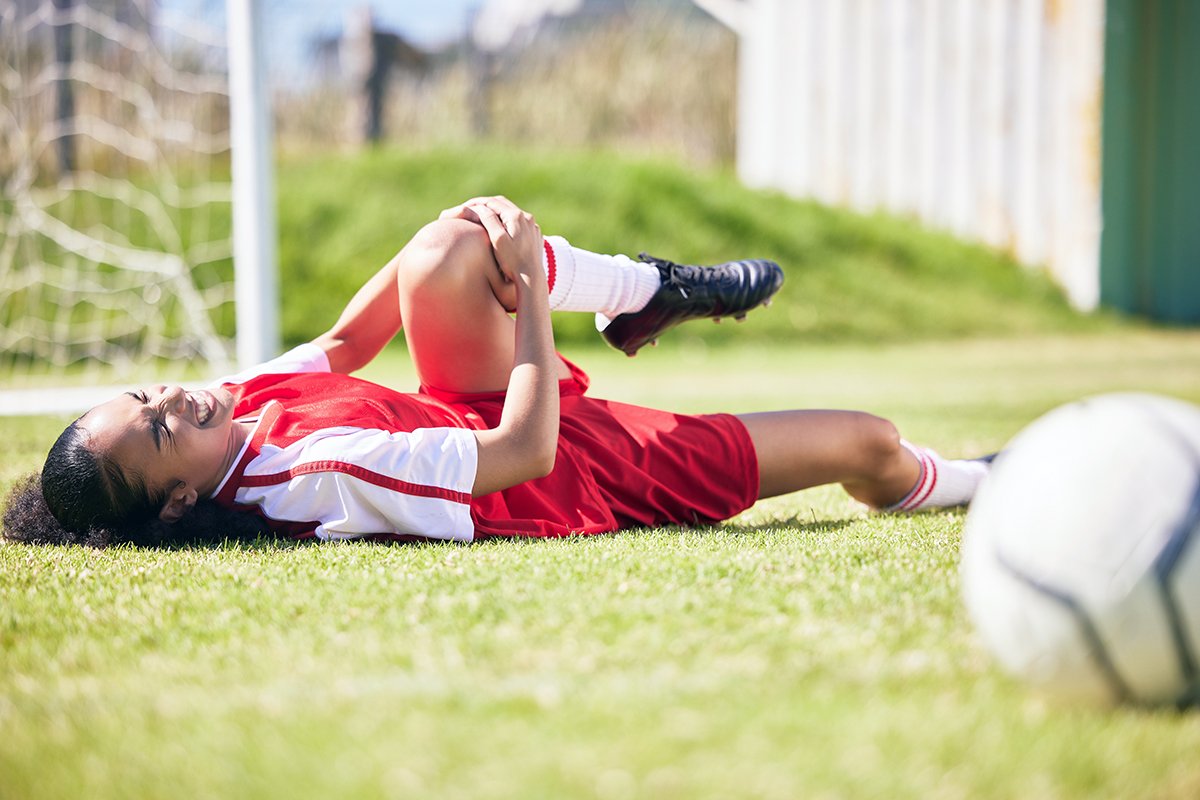FACT: Over 1/4th of the 23 female players who'll represent the U.S. in World Cup this summer have suffered at least one ACL injury. And, six of the world’s top 16 players tore an anterior cruciate ligament (ACL) between June 2022 and April 2023. Five of them will miss the 2023 World Cup because of it. Here's more on the players who will sit out this tournament due to ACL tears: https://www.espn.com/soccer/story/_/page/wwcrank/best-25-players-2023-fifa-womens-world-cup-morgan-marta
One of the most common knee injuries is an anterior cruciate ligament (ACL) sprain, or tear. Athletes who participate in high demand sports like soccer, football, and basketball are more likely to injure their ACL. Studies have shown women are up to eight times more likely to suffer ACL injuries in sports involving sudden changes of direction, like soccer and basketball, than their male counterparts. Women's joints — including the knee — generally have more looseness and range of motion than men's. Women also often have less muscle mass around the knee, contributing to more instability, which can lead to a ligament tear if the ligament gets overstretched. Technique differences also play a role.
Anatomy of the Knee Joint
Three bones meet to form the knee joint: the femur (thighbone), tibia (shinbone), and patella (kneecap). The kneecap sits in front of the joint to provide some protection. Bones are connected to other bones by ligaments. There are four primary ligaments in your knee. They act like strong ropes to hold the bones together and keep your knee stable. Collateral Ligaments: These are found on the sides of your knee. The medial collateral ligament (MCL) is on the inside, and the lateral collateral ligament (LCL) is on the outside. They control the side-to-side motion of your knee and brace it against unusual movement. Cruciate Ligaments: These are found inside your knee joint. They cross each other to form an X, with the anterior cruciate ligament (ACL) in front and the posterior cruciate ligament (PCL) in back. The cruciate ligaments control the front and back motion of your knee.
The anterior cruciate ligament runs diagonally in the middle of the knee. It prevents the tibia from sliding out in front of the femur and provides rotational stability to the knee. The PCL keeps the shinbone from moving backward too far. It is stronger than the ACL and is injured far less often.
Injured ligaments are considered sprains and are graded on a severity scale.
Grade 1 Sprains. The ligament is mildly damaged in a Grade 1 sprain. It has been slightly stretched but is still able to help keep the knee joint stable.
Grade 2 Sprains. A Grade 2 sprain stretches the ligament to the point where it becomes loose. This is often referred to as a partial tear of the ligament.
Grade 3 Sprains. This type of sprain is most commonly referred to as a complete tear of the ligament. The ligament has been torn in half or pulled directly off the bone, and the knee joint is unstable.
Partial tears of the anterior cruciate ligament are rare; most ACL injuries are complete or near complete tears.
Causes of ACL Tears
The ACL can be injured in several ways:
- Changing direction rapidly
- Stopping suddenly
- Slowing down while running
- Landing from a jump incorrectly
- Direct contact or collision, such as a football tackle
Again, several studies have shown that female athletes have a higher incidence of ACL injury than male athletes in certain sports, likely due to differences in physical conditioning, muscular strength, and neuromuscular control. The treatment options for ACL inury are the same regardless of gender. They typically include physical therapy, anti-inflammatory medications and, often, surgery. An ACL injury typically requires 6-12 months of rehab so it'll be a struggle to keep the women.
What can female athletes do to prevent ACL tears?
Sports injuries are always a possibility, even if you do everything right. But there are steps you can take to minimize risk factors related to your technique, training and lifestyle. The following recommendations are all equally important in preventing ACL tears and other sports injuries:
- Practice good technique. While not a guarantee, proper technique when training and playing a sport can help ward off sports injuries. Work with your coach and/or your sports physical therapist to identify improper form and correct it.
- Avoid working out while overly fatigued. When you’re tired, it’s easier to make mistakes or forget about good technique. Getting enough sleep and stopping a workout before exhaustion sets in help to prevent injury.
- Work to develop muscle groups evenly. Core and extremity strength are equally important. Focusing on one while ignoring the other increases your risk of injury.
- Create a balance between strength and flexibility. Both tight and overstretched muscles are more prone to injury. Working on strength and flexibility in moderation is key.
- Eat a balanced diet. Poor nutrition leads to decreased strength, endurance and attention. Eating well can help improve your focus and performance.
Sources: https://orthoinfo.aaos.org/en/diseases--conditions/anterior-cruciate-ligament-acl-injuries/, https://www.shutterstock.com/search/female-soccer-player%2c-hurt, https://www.espn.com/soccer/story/_/page/wwcrank/best-25-players-2023-fifa-womens-world-cup-morgan-marta, https://www.hopkinsmedicine.org/









